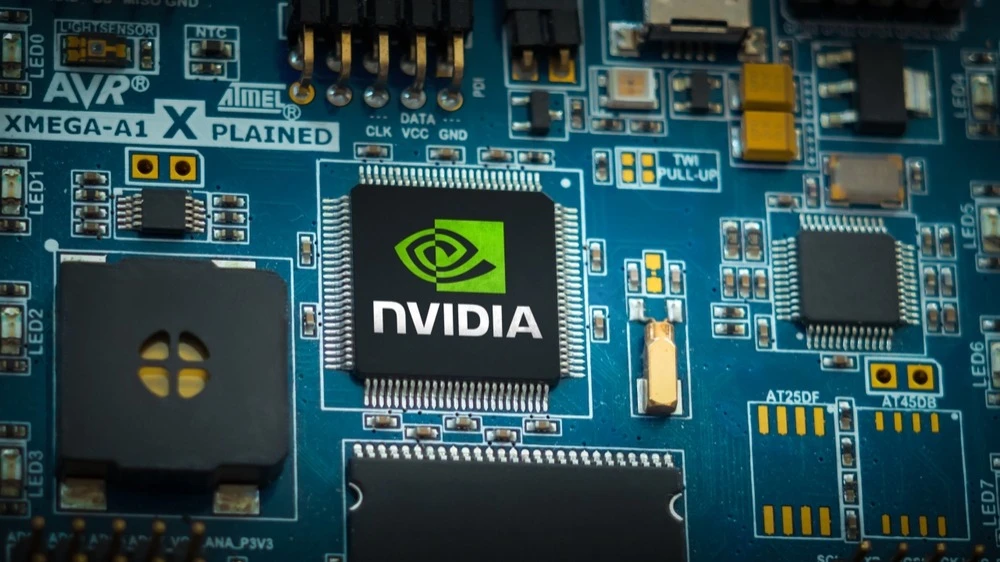'Undercover racket': what Wall Street is saying about Nvidia and AMD's deal with the US
Shares of both chipmakers fell in trading on Aug. 11

There is no consensus on Wall Street about the agreement by chipmakers Nvidia and Advanced Micro Devices (AMD) to pay the U.S. 15% of revenue from AI chip sales in China. Some experts call it a hidden export tax and a dangerous precedent, while others say that keeping 85% of the revenue is better than nothing and that the deal will allow Nvidia to quickly regain lost ground in China and retain the market without ceding it to Huawei.
Details
- The chip sales royalty scheme is the latest example of government interference in business since Donald Trump's return to the White House, Bloomberg writes. "To call it unusual or unprecedented would be a strong understatement," said former U.S. trade negotiator Stephen Olson. - What we're seeing is essentially a monetization of U.S. trade policy, in which American companies must pay the government for permission to export. If this is the case, we have entered a new and dangerous world."
- Revenue-sharing agreements with Nvidia and AMD could prompt the White House to extend similar practices to other industries and products, says Deborah Elms, head of trade policy at the Hinrich Foundation in Singapore. According to her, "there is no limit": in this fashion, you can build any combination of specific companies and countries, banning trade to all who are not willing to pay the government directly. At the same time, Elms notes, there are questions about the legality of such transactions, because in essence it is like an export tax, which is prohibited by the U.S. Constitution.
- While the U.S. has resorted to business intervention before, for example, buying stakes in private companies after the 2008 crisis, a deal as unusual as the agreement with Nvidia and AMD is hard to recall, says Scott Kennedy, senior adviser at the Center for Strategic and International Studies in Washington. Without proper oversight, he says, it could lead to a "system of crony capitalism" and represents a major shift in the way the U.S. economy works. "It's unlikely to make anyone happy, except perhaps the Chinese, who will get their chips and watch the U.S. political system go through internal conflicts and tensions," added Kennedy, who was quoted by Bloomberg.
- "The unusual deal is part diplomacy, part undercover racketeering," added SPI Asset Management managing partner Stephen Innes, quoted by MarketWatch. He said it is actually a political duty disguised under a different name and introduced amid heightened technology tensions between the U.S. and China.
- Wells Fargo analysts, in turn, saw the deal as positive for Nvidia. Already after the announcement of the agreement and before the publication of the quarterly report (August 27), analysts at the investment bank raised the target price on Nvidia shares from $185 to $220 and confirmed the Overweight rating (above the market). The new Wells Fargo target implies the potential for the company's securities to grow by another 20% from Friday's close. Wells Fargo believes that thanks to the return of Nvidia chips to China, the company will be able to fully offset the $8 billion in quarterly revenue lost due to the ban on H20 chips in the PRC in the second quarter by the fourth quarter of fiscal 2026. Further, according to the bank's analyst, demand in China will only grow.
- "From an investor perspective, it's still a clear upside: 85% of revenue is better than nothing," Quilter Cheviot global technology analyst Ben Barringer told CNBC. He said the key question is whether Nvidia and AMD will raise prices by 15% to reflect the new levy, but in the end it's more favorable for the companies to retain market access than to completely cede it to rival Huawei.
What about the stock
In early trading on August 11, Nvidia shares were down 1% to $180.8. Compared to the beginning of 2025, the market value of one of the main beneficiaries of the AI boom has now increased by 35%, and on July 9, the company was the first in the world to reach a market capitalization of $4 trillion.
AMD's securities slipped more strongly - by 1.7% (to $169.8). Nevertheless, since the beginning of the year they are in the plus by almost 42%. For comparison: the main U.S. stock index S&P 500 for the same period added almost 9%.
Nearly 90% of analysts who have rated Nvidia's stock advise investors to buy (Buy and Overweight ratings). But the average target price - $185.3 - suggests growth of only 1.4% from Friday's close. AMD shares are advised to buy by 73% of analysts tracking them, and the average target is 5.7% above the last close.
Context
Chips remain a key front in the U.S.-China battle for leadership in AI and automation, Bloomberg notes. After a ban on advanced chips by the Joe Biden administration, Nvidia created the H20 model that got around the restrictions, but in April the Trump administration demanded a license to export it too. Last month, the White House authorized Nvidia and AMD to sell not-so-advanced versions of the chips to China, and U.S. Commerce Secretary Howard Lutnick said he wanted to "hook" Chinese developers on U.S. technology. The Beijing government is increasingly hostile to the idea of introducing H20s, but local companies can use them because of a shortage of their own AI chips, Bloomberg emphasizes.
This article was AI-translated and verified by a human editor
